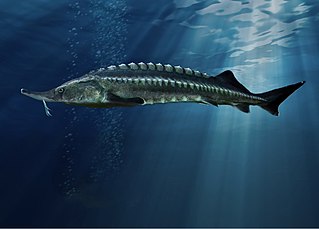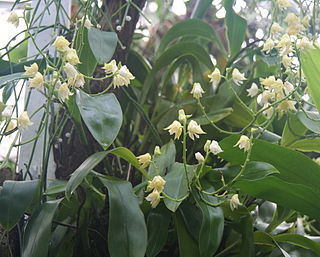
The Endangered Species Act of 1973 is the primary law in the United States for protecting imperiled species. Designed to protect critically imperiled species from extinction as a "consequence of economic growth and development untempered by adequate concern and conservation", the ESA was signed into law by President Richard Nixon on December 28, 1973. The U.S. Supreme Court called it “the most comprehensive legislation for the preservation of endangered species enacted by any nation". The purposes of the ESA are two-fold: to prevent extinction and to recover species to the point where the law's protections are not needed. It therefore “protect[s] species and the ecosystems upon which they depend" through different mechanisms. For example, section 4 requires the agencies overseeing the Act to designate imperiled species as threatened or endangered. Section 9 prohibits unlawful ‘take,’ of such species, which means to “harass, harm, hunt...” Section 7 directs federal agencies to use their authorities to help conserve listed species. The Act also serves as the enacting legislation to carry out the provisions outlined in The Convention on International Trade in Endangered Species of Wild Fauna and Flora (CITES). The Supreme Court found that "the plain intent of Congress in enacting" the ESA "was to halt and reverse the trend toward species extinction, whatever the cost." The Act is administered by two federal agencies, the United States Fish and Wildlife Service (FWS) and the National Marine Fisheries Service (NMFS). FWS and NMFS have been delegated the authority to promulgate rules in the Code of Federal Regulations to implement the provisions of the Act.

The conservation status of a group of organisms indicates whether the group still exists and how likely the group is to become extinct in the near future. Many factors are taken into account when assessing conservation status: not simply the number of individuals remaining, but the overall increase or decrease in the population over time, breeding success rates, and known threats. Various systems of conservation status exist and are in use at international, multi-country, national and local levels as well as for consumer use.

Dioscorea polystachya or Chinese yam, also called cinnamon-vine, is a species of flowering plant in the yam family. It is sometimes called Chinese potato or by its Japanese name nagaimo.

An IUCN Red List Critically Endangered (CR) species is one that has been categorized by the International Union for Conservation of Nature as facing an extremely high risk of extinction in the wild. As of 2021, there are 6,811 species that are considered to be Critically Endangered. This is out of the 120,372 species currently tracked by the IUCN.

Aphanamixis polystachya, the pithraj tree, is a species of tree in the family Meliaceae. It is native to India, Pakistan, Nepal, Bhutan, Bangladesh, Myanmar and Sri Lanka. It is a widely used as a medicinal plant in Ayurveda.
(Orachrysops ariadne), the Karkloof blue, is a species of butterfly in the family Lycaenidae.
Pavetta kupensis is a species of plant in the family Rubiaceae. It is endemic to Cameroon. Its natural habitat is subtropical or tropical moist montane forests.

Polystachya bicalcarata is a species of plant in the family Orchidaceae. It is found in Cameroon and Equatorial Guinea. Its natural habitats are subtropical or tropical moist lowland forests and subtropical or tropical moist montane forests. It is threatened by habitat loss.

Polystachya, abbreviated Pol in horticultural trade, and commonly known as yellowspike orchid, is a flowering plant genus in the orchid family (Orchidaceae). This rather distinctive genus was described by William Jackson Hooker in 1824 and is the type genus of the subtribe Polystachyinae. It contains about 100 species widespread across many of the tropical areas of the world.
Polystachya cooperi is a species of flowering plant in the orchid family, Orchidaceae. It is native to Cameroon and Nigeria. It grows in forests and woodlands. Most populations are threatened with habitat loss as forests are cleared.
Polystachya farinosa is a species of flowering plant in the orchid family, Orchidaceae. It is native to Cameroon and São Tomé Island. This forest epiphyte has not been collected from Cameroon since 1968 and its population on São Tomé Island is sparse and little known.
Polystachya geniculata is a species of flowering plant in the orchid family, Orchidaceae. It is endemic to Cameroon. It is known from only two locations. It grows in the soil or on rocks.
Polystachya superposita is a species of flowering plant in the orchid family, Orchidaceae. It is native to Equatorial Guinea. It is also found in Cameroon, where it is thought to be an introduced species. This forest epiphyte is threatened by habitat destruction as forest land is cleared.

Polystachya victoriae is a species of plant in the family Orchidaceae. It is found in Cameroon and Gabon. Its natural habitat is subtropical or tropical dry forests. It is threatened by habitat loss.
Prunus polystachya, also called bat laurel, is a species of plant in the family Rosaceae. It is endemic to Singapore.
Schumanniophyton problematicum is a species of plant in the family Rubiaceae. It is found in Ivory Coast, Ghana, and Sierra Leone. It is threatened by habitat loss.

A vulnerable species is a species which has been categorized by the International Union for Conservation of Nature as likely to become endangered unless the circumstances that are threatening its survival and reproduction improve.

Koenigia polystachya is a species of flowering plant in the knotweed family, known by the common names Himalayan knotweed and cultivated knotweed. It has several regularly used synonyms, including Polygonum polystachyum, Aconogonon polystachyum and Persicaria wallichii.

Moraea polystachya is a species of plant in the family Iridaceae native to southern Africa.











